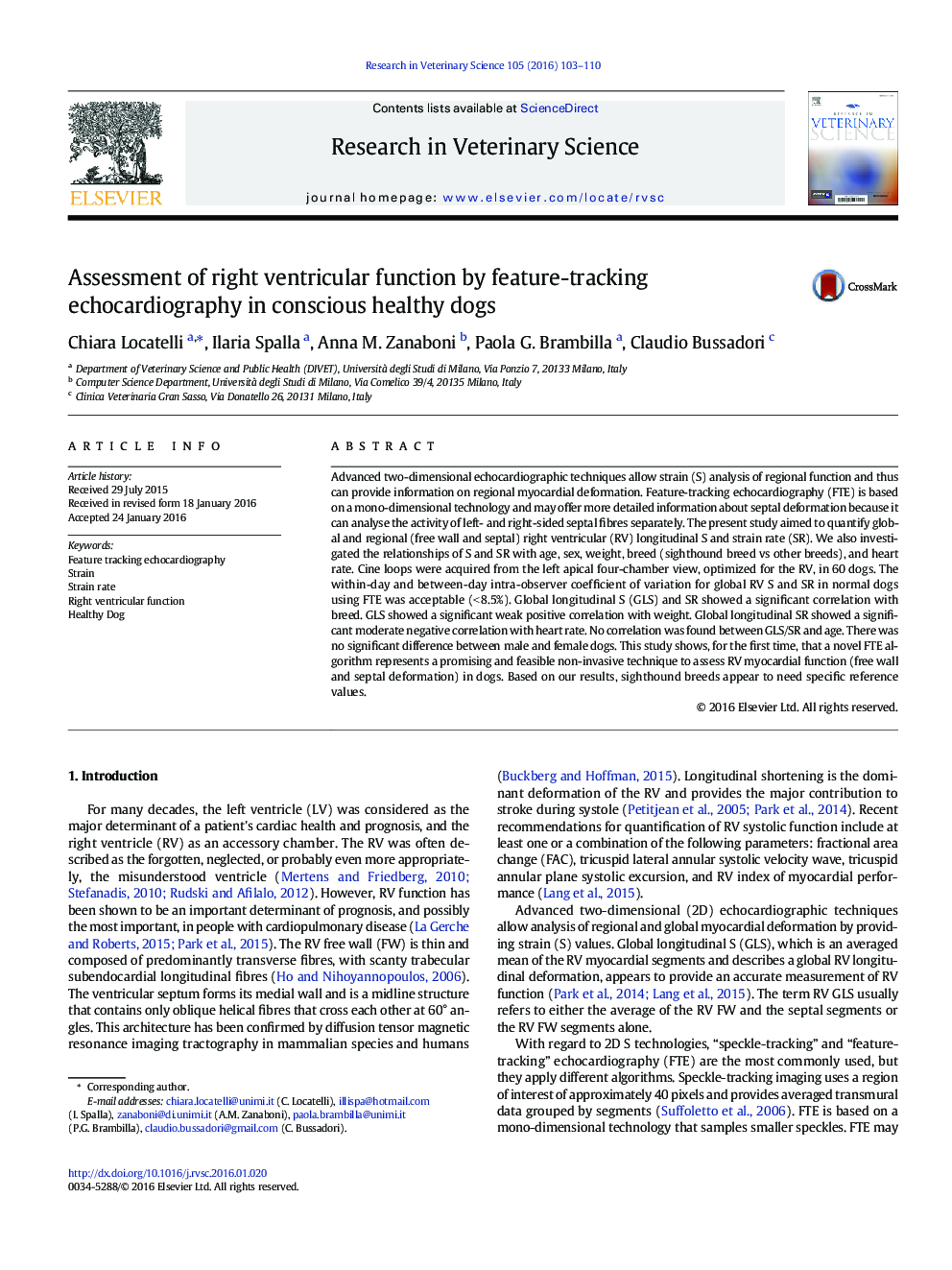| Article ID | Journal | Published Year | Pages | File Type |
|---|---|---|---|---|
| 5794398 | Research in Veterinary Science | 2016 | 8 Pages |
â¢Right ventricle (RV): the most important predictor of clinical outcomes in peopleâ¢RV longitudinal strain: a sensitive measurement of RV functionâ¢Feature tracking echocardiography: a useful diagnostic tool also in dogs
Advanced two-dimensional echocardiographic techniques allow strain (S) analysis of regional function and thus can provide information on regional myocardial deformation. Feature-tracking echocardiography (FTE) is based on a mono-dimensional technology and may offer more detailed information about septal deformation because it can analyse the activity of left- and right-sided septal fibres separately. The present study aimed to quantify global and regional (free wall and septal) right ventricular (RV) longitudinal S and strain rate (SR). We also investigated the relationships of S and SR with age, sex, weight, breed (sighthound breed vs other breeds), and heart rate. Cine loops were acquired from the left apical four-chamber view, optimized for the RV, in 60 dogs. The within-day and between-day intra-observer coefficient of variation for global RV S and SR in normal dogs using FTE was acceptable (<Â 8.5%). Global longitudinal S (GLS) and SR showed a significant correlation with breed. GLS showed a significant weak positive correlation with weight. Global longitudinal SR showed a significant moderate negative correlation with heart rate. No correlation was found between GLS/SR and age. There was no significant difference between male and female dogs. This study shows, for the first time, that a novel FTE algorithm represents a promising and feasible non-invasive technique to assess RV myocardial function (free wall and septal deformation) in dogs. Based on our results, sighthound breeds appear to need specific reference values.
